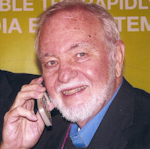If you work with communications products or services—whether wireless, wired, or otherwise—what you do is subject to some control by the Federal Communications Commission (FCC). If you’re a communications policy wonk, you probably already follow the doings of the FCC like I do. If not, maybe you should. With the new administration now in place, you can expect some policy shifts and a new approach to regulation. Anyway, if you haven’t been keeping track, here’s a short update.
First, keep in mind that the FCC is an independent government agency overseen by Congress. Its job is to regulate interstate and international communications by radio, television, wire, cable, satellite, and other technologies. It generally does a good job and is basically fair and balanced. However, under some administrations, severe control and regulation seems to be the goal.
A New Chairman
When Donald Trump was sworn in on Jan. 20, FCC Chairman Tom Wheeler resigned. Wheeler, a Democrat, is the guy who brought us the overly heavy-handed net neutrality regulation in 2015, thanks to extreme pressure from the “net neut” lobby and President Obama. While the regulations from the ancient Title II of the 1934 Communications Act have not yet been applied, their foreboding existence has probably halted or delayed the funding and development of some potentially beneficial services or products.
Wheeler’s action is a great example of regulation for the sake of it. If you are a federal regulatory agency, what you do is regulate—even if there’s no evidence that you need it. The internet already was open and neutral; now it is not. The FCC wanted to determine industry’s winners and losers.
Overall, Wheeler wasn’t a bad chairman, excepting the net neut faux pas. He did run some successful auctions and allocated some prime 5G spectrum. Not all regulation is bad.
The new chairman is Ajit Pai, one of the commissioners under Wheeler. Pai’s is an attorney who has been with the FCC for four years. He regularly wrote dissent papers critical of Wheeler’s policies. Pai’s agenda, as a Republican, is likely to be quite different. He could reverse the net neutrality regulation. He could also kill the effort to open the market for set-top boxes. We will soon find out what other deregulatory actions occur under his leadership.
An example of Pai’s anti-regulatory stance is the recent ending of the investigation into AT& T and Verizon’s “free data” offerings. Wheeler had said this practice was anti-competitive and violated the net neutrality policy. Pai, on the other hand, had this to say: “Going forward, the Federal Communications Commission will not focus on denying Americans free data. Instead, we will concentrate on expanding broadband deployment and encouraging innovative service offerings.”
One of Pai’s favorite causes is extending broadband to all Americans. So many households are still without a high-speed internet connection which is so critical for education and job creation in our tech-oriented world today. There are many citizens, especially in rural areas, who still lack a fast link to the internet. The new chairman promises to make that happen despite the fact that cable and telcom companies have yet to find a way to make a profit doing so.
By initially using it for wireless broadband service, high-speed 5G technology may provide the answer. In the meantime, the FCC recently voted to allocate $170,000 from the Connect America Fund to implement broadband in underserved regions of New York. Something like that is needed in many mid-country, southern and western states where broadband service is rare. Slow DSL is the best many have in today’s world of streaming video.
Pai is already moving forward on his goal: He recently formed the Broadband Deployment Advisory Committee (BDAC), which will provide an overall model for extending broadband services nationwide.
Other Personnel Changes
The FCC is made up of five commissioners: the chairman and four others. The returning commissioners from the previous administration are Mignon Clyburn (a Democrat) and Michael O’Rielly (a Republican). Two other commissioners—one from each party—have yet to be appointed. This will change the balance of the Commission from a 3 to 2 Democrat majority to a 3 to 2 Republican majority. Some interesting new decisions are inevitable in the coming years.
Oh, yes. One more thing: The new secretary of the Department of Commerce (DoC) is Wilbur Ross, a successful businessman. Since the National Telecommunications and Information Administration (NTIA) is an agency of the DoC, more communications actions are likely. NTIA manages the government and military spectrum as well as multiple other communications policies. Look for additional changes there, as well.
NTIA made what many consider a huge (and potentially illegal) blunder last Oct. 1, when it released the Internet Corporation of Assigned Names and Number (ICANN) from its contract with the DoC. This means that the U.S. no longer controls ICANN and the internet.
ICANN, which manages internet domain names and IP addresses, is now an independent agency potentially subject to considerable influence and control by foreign countries. Some even fear that ICANN could end up under the UN. Advocates tried to stop the release of ICANN, but the action took place anyway—another goof-up of the previous administration. Who knows where this will go.
Recent FCC Actions
The FCC is winding down its auction of 600-MHz range spectrum. This is spectrum licensed to TV stations that is generally underutilized. The goal is to provide more bands for the cellular carriers that seem to perpetually need more spectrum. This incentive, or reverse auction, pays the TV stations for giving up their licenses, then accepts bids from carriers and other seeking this valuable spectrum. Roughly 70 MHz of licensed spectrum has been auctioned off along with 14 MHz of new unlicensed spectrum.
The broadcasters will collectively get about $10 billion for their licenses. Any additional funds from the auction goes into the U.S. Treasury. This auction has not been as successful as past auctions that brought in tens of billions of dollars. Yet it achieves the goal of repurposing underused spectrum for needed new wireless developments. One instance where Wheeler did good.
Another good move by him was to formally designate spectrum for 5G wireless. Lack of frequency assignments was holding up 5G development. The ruling in July 2016 designated 3.85 GHz of spectrum in the 28, 37, and 39 GHz bands, and is greatly expediting 5G cellular and broadband development. Also allocated was 7 GHz additional spectrum from 64 to 71 GHz for unlicensed activity. This is an extension of the existing 57 to 64 GHz unlicensed band. Can’t wait to see what happens there.
The FCC recently announced that it was expediting the rollout of the next-generation over-the-air digital TV standard from the Advanced Television Standards Committee (ATSC). Known as ATSC 3.0, the standard enables delivery of ultra-high-definition television (4K) over standard TV channels. ATSC 3.0 drops the 8VSB modulation method used in the original digital TV standard in favor of the more durable and reliable OFDM method. Look for a forthcoming Notice of Proposed Rule Making (NPRM).
But that’s not all: There’s just too much to report on. If you want to follow the FCC’s actions, go to their website at and sign up for their Daily Digest of current actions and activity.



